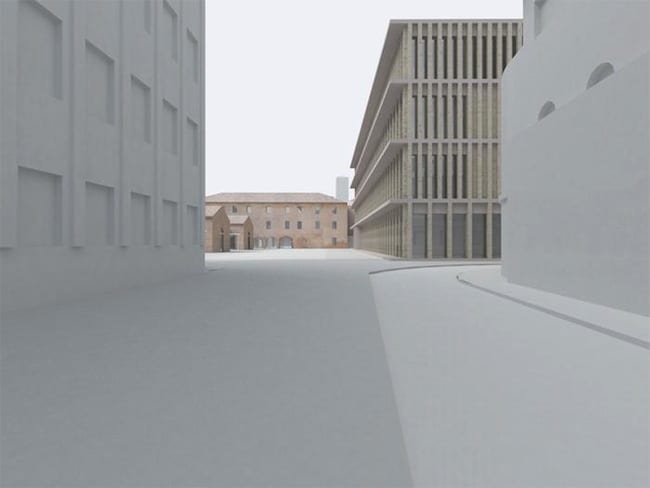This is the second of three posts about the M9 museum’s architectural competition for its building in Venice Mestre (on the mainland opposite Venice). You can read parts one and three in this week’s issue. After you’re done looking at the buildings, please tell us in the comments which one you would have picked for the museum, had you been on the jury.
A runner-up in the competition was David Chipperfield Architects of London and Milan, with a building that, unlike the competition’s winner, uses brick to create less of a contrast against the historic buildings of Venice Mestre. His design is conservative, but in the interest of keeping the building accessible to the city residents. Chipperfield states in the video which follows that he wants to avoid creating a building that people visit only three times in their lives. He strived to create a museum which “has the atmosphere of being a public space.”
“The architecture of contemporary museums has become a sort of game. It’s an opportunity for architects to be very inventive. I suppose my feeling is that the more strange it becomes, the more exclusive it becomes and the more alien it becomes unless it’s able to become a part of the city structure.”
Chipperfield appears to have applied this idea in an earlier project. Below are two pictures of the Neues Museum in Berlin. While the approach is similar to his proposal for M9, Chipperfield was working with an existing building which suffered extensive bombing in World War II, sitting abandoned for almost 60 years. His task became adding new elements but to make them fit with the historic existing structure.


The Neues Museum reconstruction by David Chipperfield Architects. Photographs by Jim Stephenson.
Below are the design renderings for Chipperfield’s M9 proposal. Sensible? Too restrained? Let us know what you think in the comments.
Featured image: David Chipperfield’s proposal for the M9 Museum in Venice Mestre.





David Chipperfield’s proposal for the M9 Museum in Venice Mestre.

Add your valued opinion to this post.